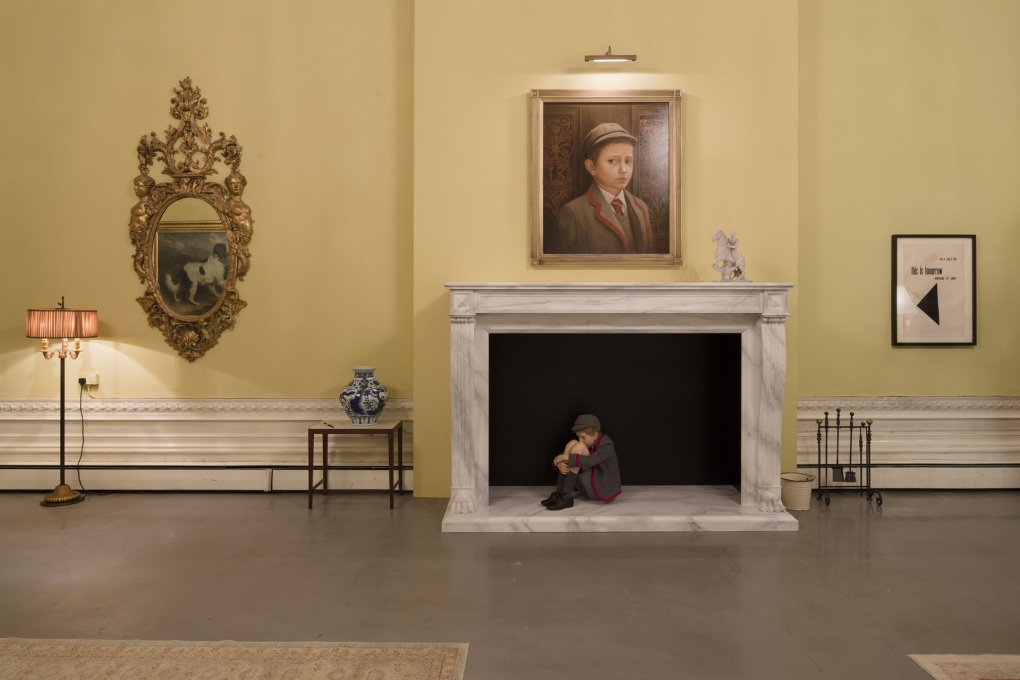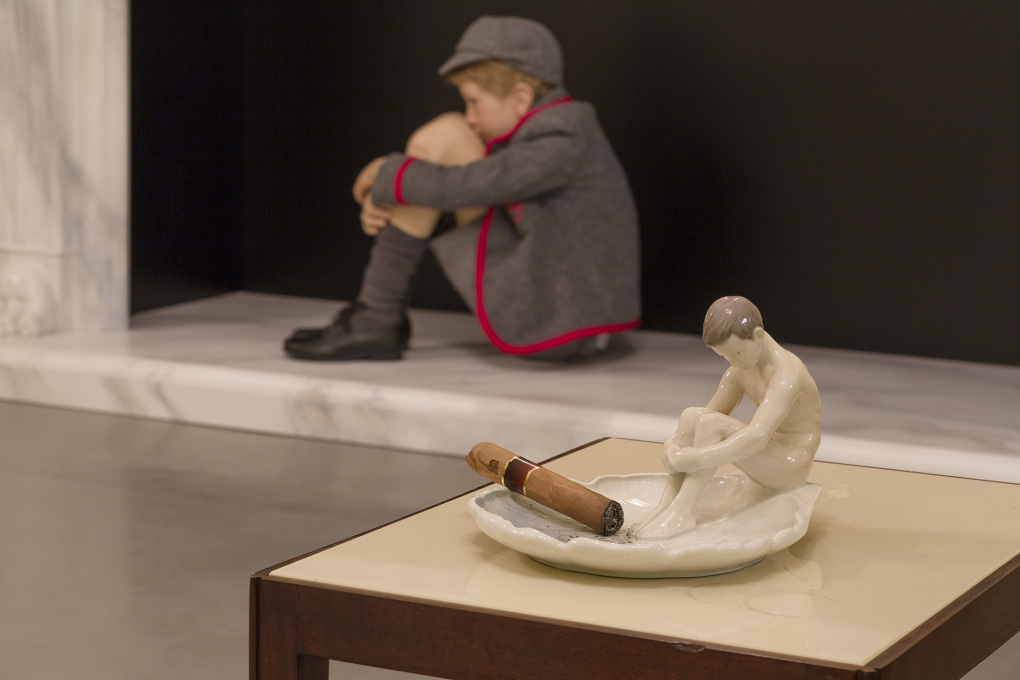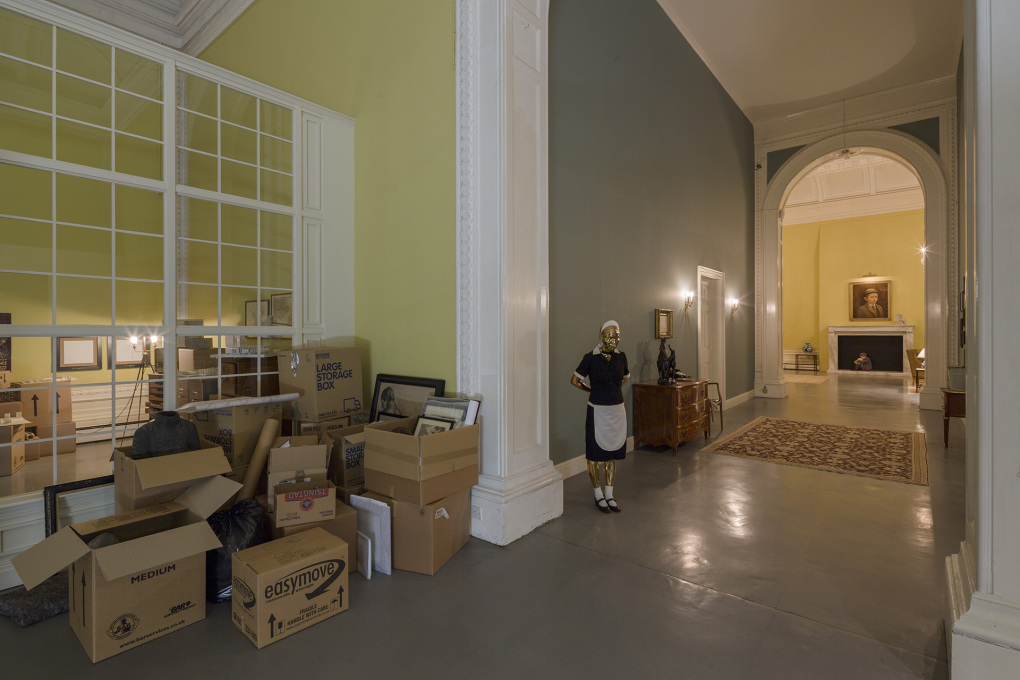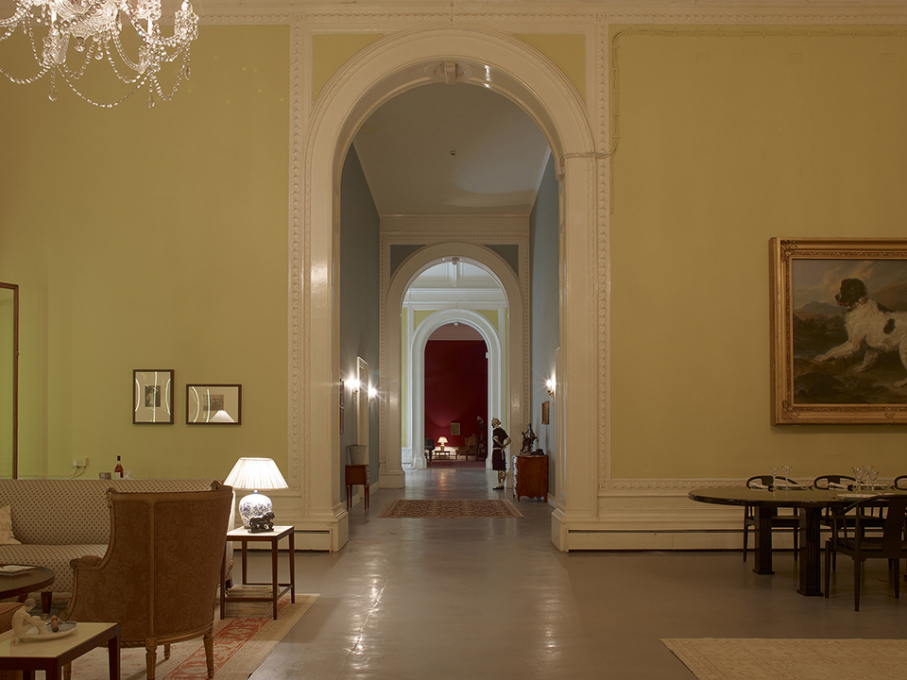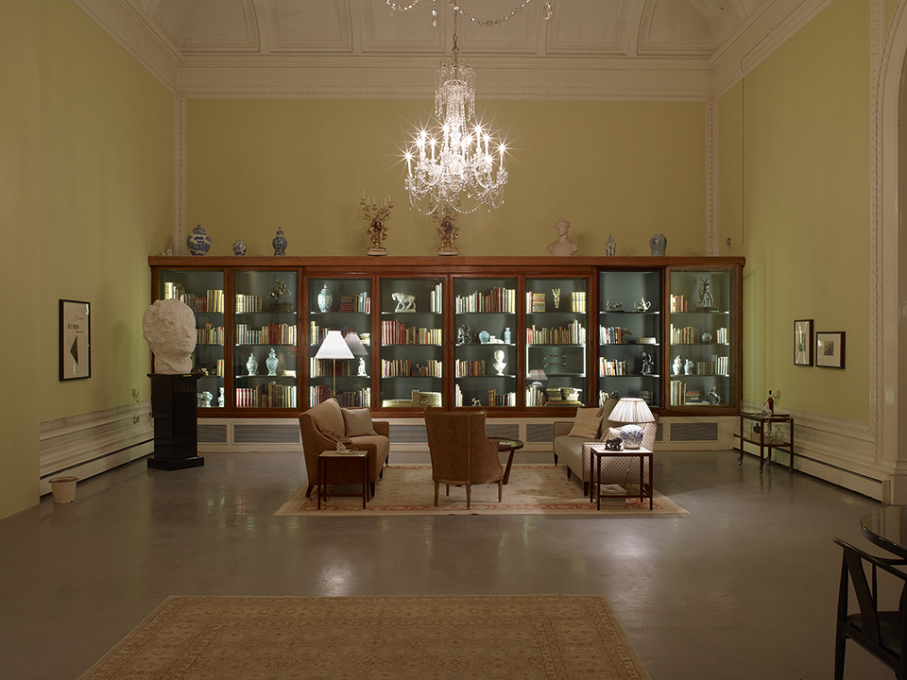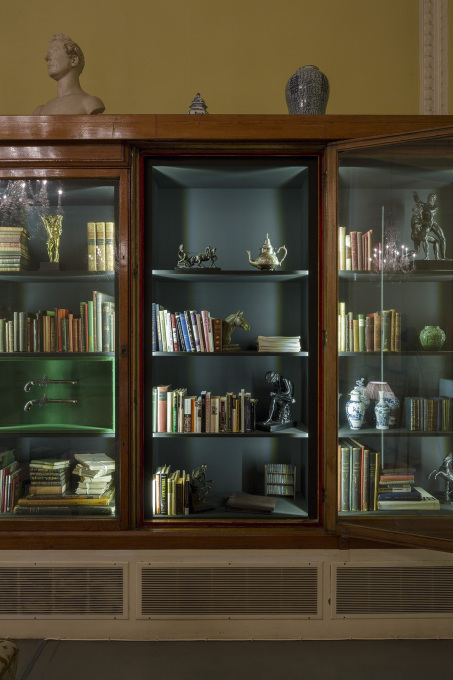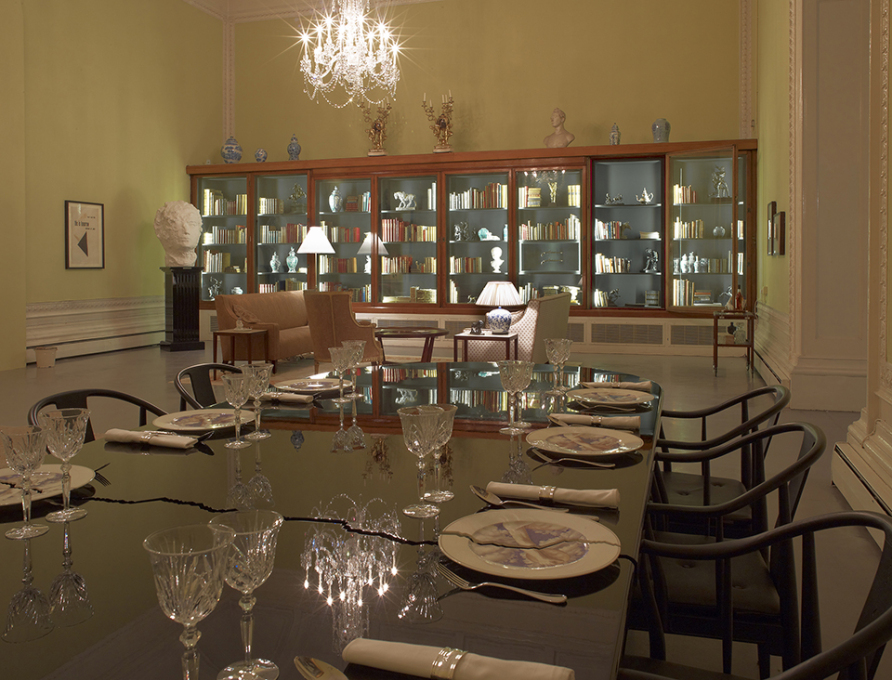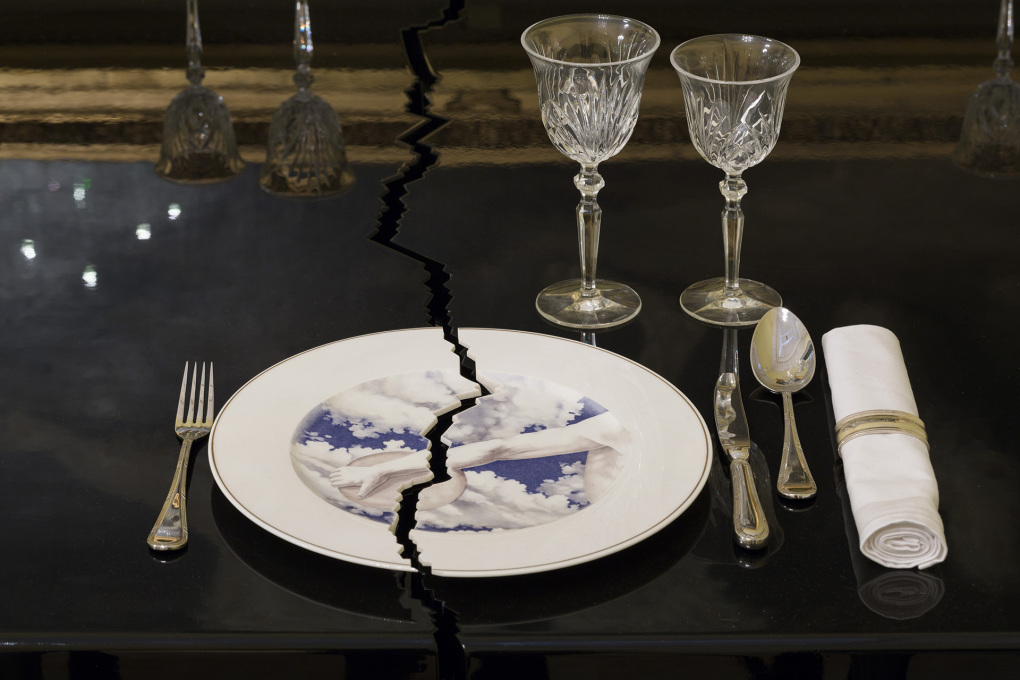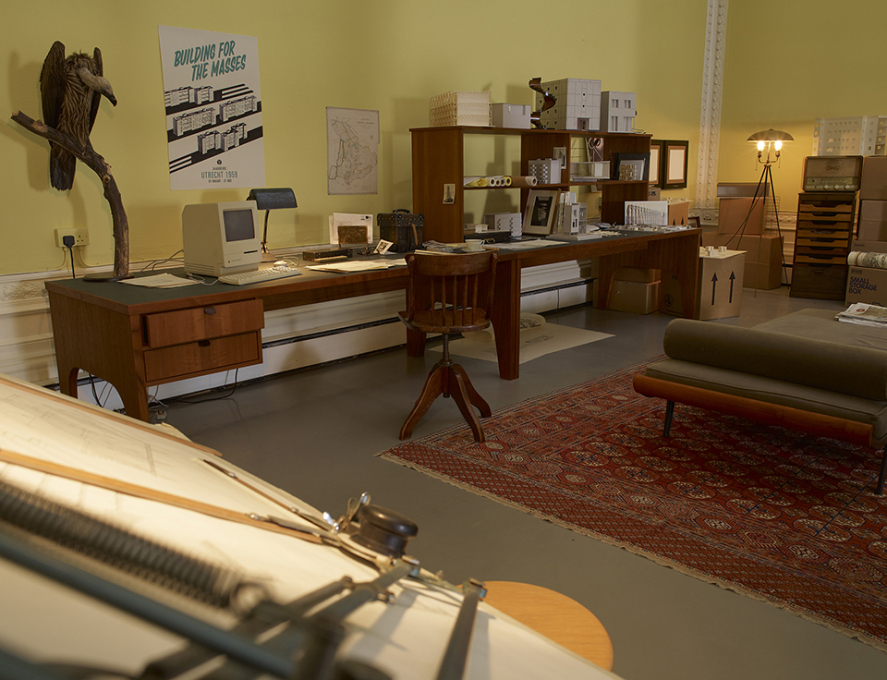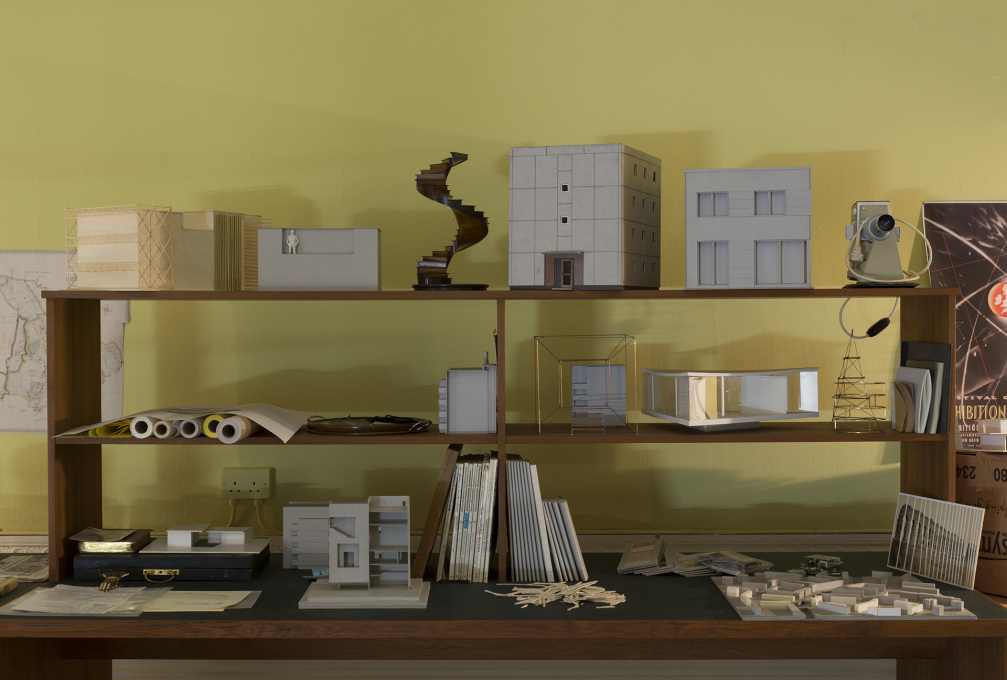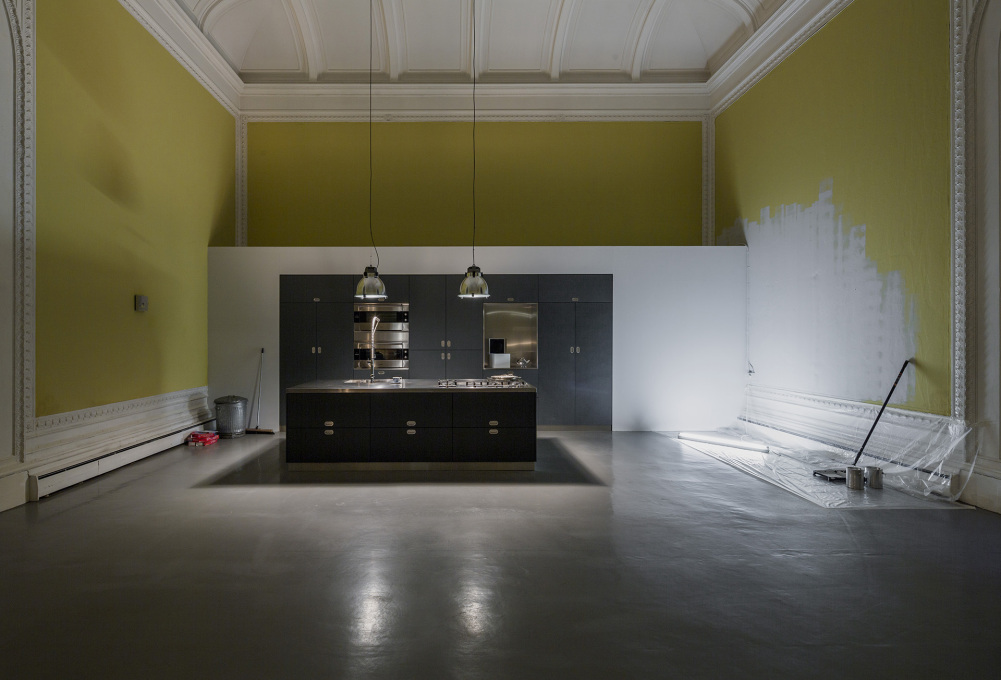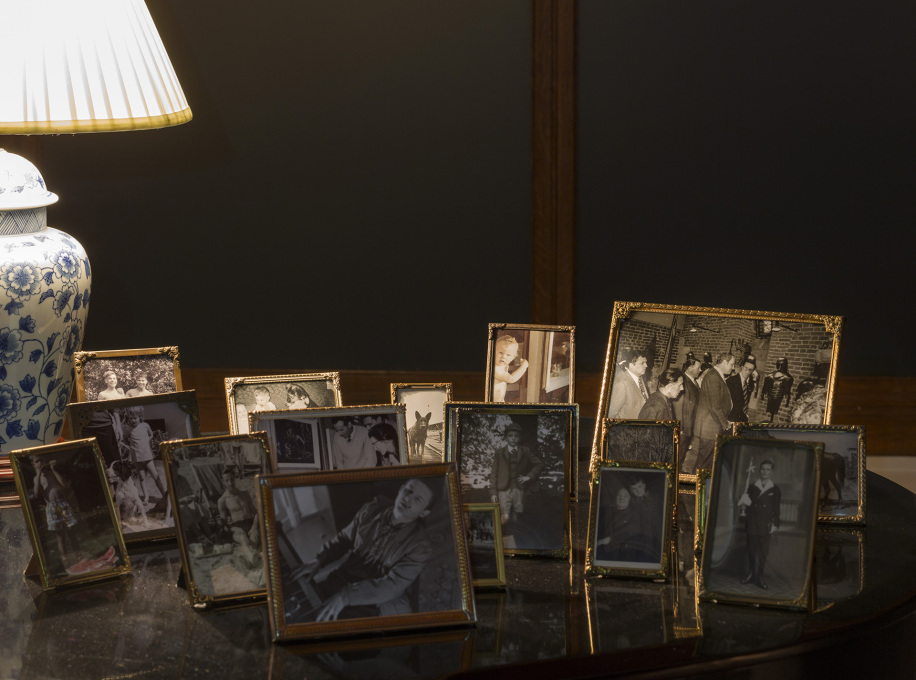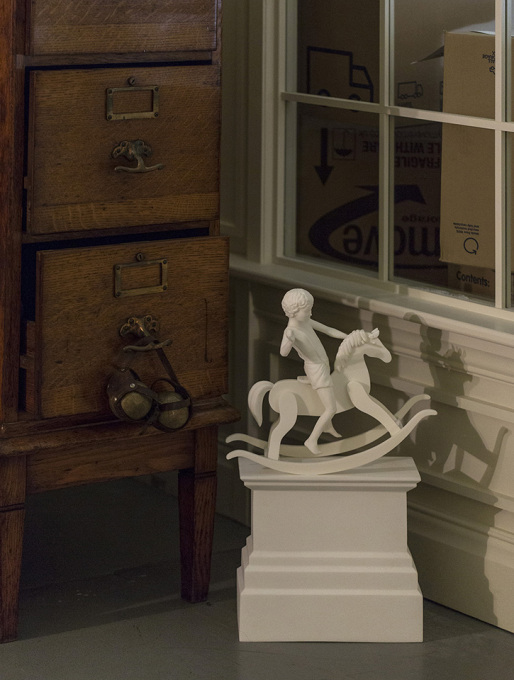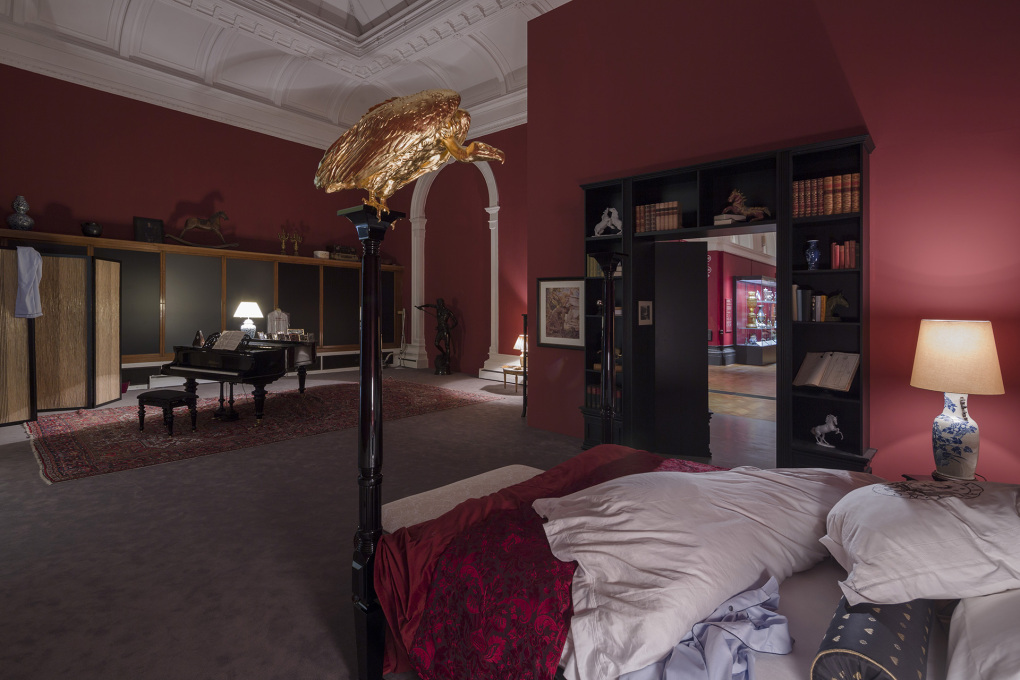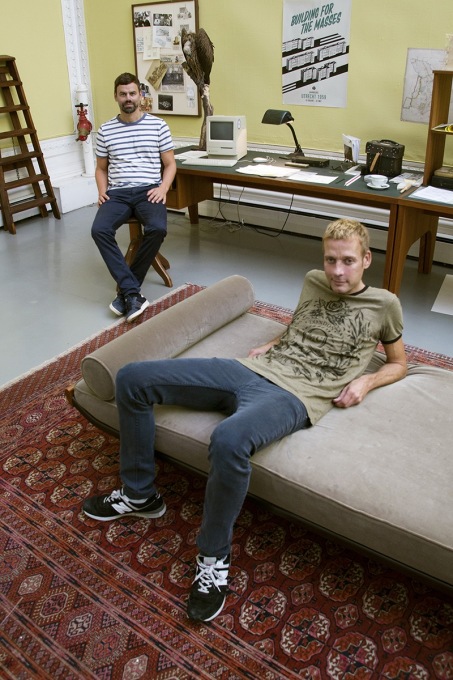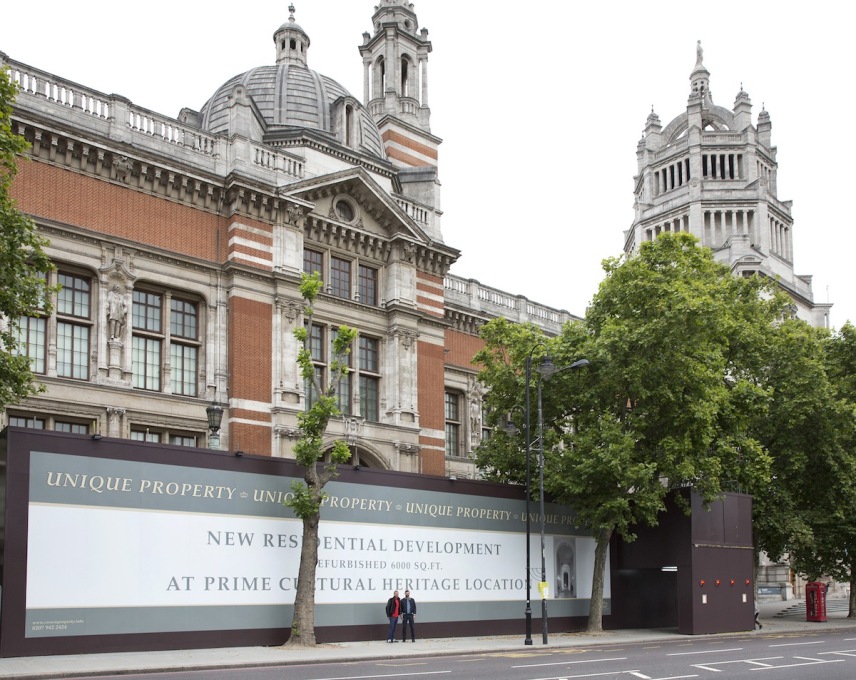Artist duo Elmgreen & Dragset’s new installation Tomorrow at the V&A, transforms five galleries of the museum into the house of a fictional architect, laying clues for the visitor as to his life – and impending bankruptcy – as well as the bigger back story of the giddy world of money and property in London. Kester Rattenbury reports on a show where the grand narrative is undermined by the unconvincing detail.
“You are now entering the house of Norman Swann.” reads the text at the entrance to Elmgreen & Dragset's exhibition Tomorrow at London’s Victoria and Albert Museum. Norman, it explains, is a failed architect (who's nonetheless a lecturer at Cambridge), 75 years old, on the verge of bankruptcy and about to be forced out of the family home. “You play the role of uninvited guest, seeking out the clues in the objects that unveil the story of Norman’s life”.
The thing is, this is so clearly not an architect’s house that it stopped me from enjoying the show or puzzling out the clues or jokes. (I totally missed the faux “redevelopment” hoarding at the entrance to the museum or the implication of the crack through the dining table: the underlying narrative being about the over-inflation of London’s boom-bust property market – and its shaky foundations). Elmgreen & Dragset are great – loved their rocking horse on the fourth plinth of Trafalgar Square – but I ended up so obsessed by how un-English and un-architecty this installation is that suspect I ended up as a random character in the story myself.
E&G suggest we read the installation as the set for a film: but taken at face value, it’s the wrong film. It might be a dramatisation of, say, Edmund de Waal’s book The Hare with the Amber Eyes, about de Waal’s ancestor, a Viennese banker and collector (there are amazing paintings here, of course, this being the V&A), who was a kind of precursor for Proust’s Charles Swann. It’s that kind of setting depicted – Mittel European, big, cultured and extreme. There’s a script provided for visitors, which isn't very architect-specific either. I’d say (despite some architectural magazines and a significant This is Tomorrow poster which I was too bewildered to figure out) an architect had never been anywhere near this house.
Because you can tell an architect’s house even before you close the door on entering, and this isn’t it. It is way too big, for a start. It doesn’t have that type or size of books, that way of categorising them, that sort of bookcase. Or that way of hanging pictures, shelving models, setting up workspaces which you instinctively recognise if you’re one of the tribe. This doesn’t fit.
And that’s before you reach the really un-architectural bits: the “minimalist” kitchen looking like a showroom; the slightly Surrealist bedroom; and specially the “studio”. Norman Swann is only 75 but seems to have been working on a random assortment of heroic modernist projects. The rooms are stuffed with anachronisms and fakes: traditional drawings, with no title box, printed out on matt paper, taped to a parallel motion drawing board. A Mac SE 1 with no printer; A4 printouts. Loads of filing cabinets but no large plan chests. None of the drawings or models seemed to be of the same project. I ended up far more bothered by the unconvincing bits than allured by the surreal ones.
But I bet the joke’s on me. I was so disconcerted by the depth of my architecty, trainspotterly reaction that it took me until I was leaving the museum to wonder whether Elmgreen & Dragset actually meant us to discover Swann was a fraud, and on emerging, to recognize the signs of the bigger, cheekier portrait of a property-mad London that they’ve set up. But I still think to do this really brilliantly, they perhaps needed an architect to help them out. God, after all, is in the details.
– Kester Rattenbury is an architectural journalist, writer and critic based in London and a senior lecturer at Westminster University.
Tomorrow
Victoria and Albert Museum, London
Until January 2, 2014

Blog Review 09 Oct 2013



